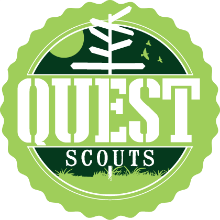Objective:
Identify, travel to and view a meteorite or an impact crater.
Details:
1) An impact crater is the depression a meteorite leaves when it falls to earth. Check out this impact map to identify the nearest few exposed impact crater to you. Then, look up the sites to find out whether or not you might feasibly visit one.
Note: Please do this step even if you choose to visit a meteorite.
2) If you decide to visit an impact crater, great! Skip to number five. However, while it would be AWESOME to visit an impact site, many of you will find it difficult to get to one. Therefore, you might want to go for the next best thing…
3) (Optional) A meteorite is a meteor (full or partial) that makes it through the earth’s atmosphere. If you’d like to learn more about meteorites check out this video from The Brain Scoop. (Come on, don’t skip it! Lets LEARN something new. It’s worth your time!)
4) Identify the site of a meteorite on display that you’d like to visit.
Important Note: We’re not looking for a meteorite in a collector’s house, but rather something ON PUBLIC DISPLAY, either in a museum or other public space.
Examples include:
This meteorite display at UCLA, California
This huge guy at The Museum of Natural History in New York
The Meteorite Museum at The University of New Mexico
The World’s Largest Meteorite in Namibia
5) Visit your meteorite or impact crater! Make sure to take note of 1-3 interesting things you’ve learned about meteorites or impact craters while on your adventure.
6) Create and share a field report!
Please make sure to mention the following in your report:
-Your research leading up to your adventure. Please include which meteorite(s) are closest to you and why you could, or could not, visit it/them.
-The location of the crater or the location your meteorite was found.
-If applicable, the type and makeup of your meteorite.
-A description of the day (Who you were with, what was the weather like…)
-What you liked about your adventure.
-What, if anything, you found challenging about your adventure.
-Anything else you think we might find interesting!
Post your field report in the comments below.
7) Take a photo while at your impact site or meteorite display and post it on Instagram or Twitter with the tag #QuestScouts. Alternatively, you can also share your photo in our Facebook group.


